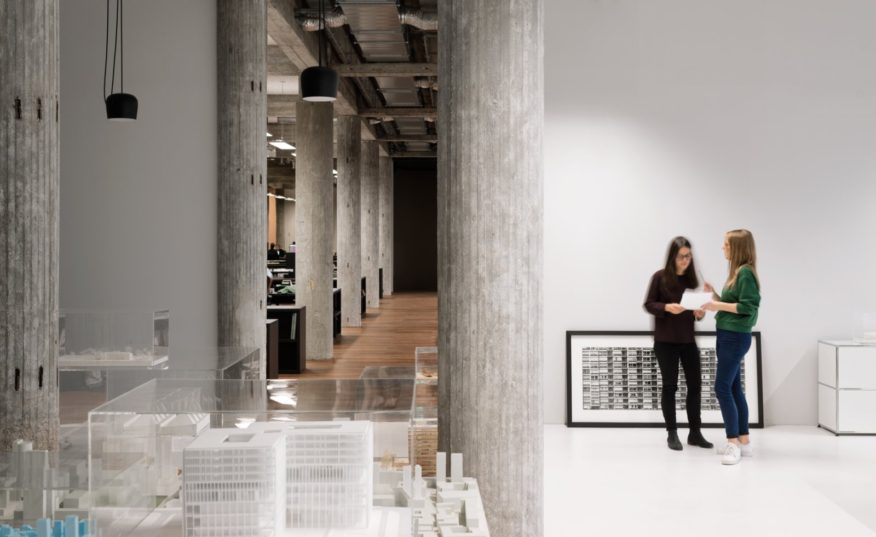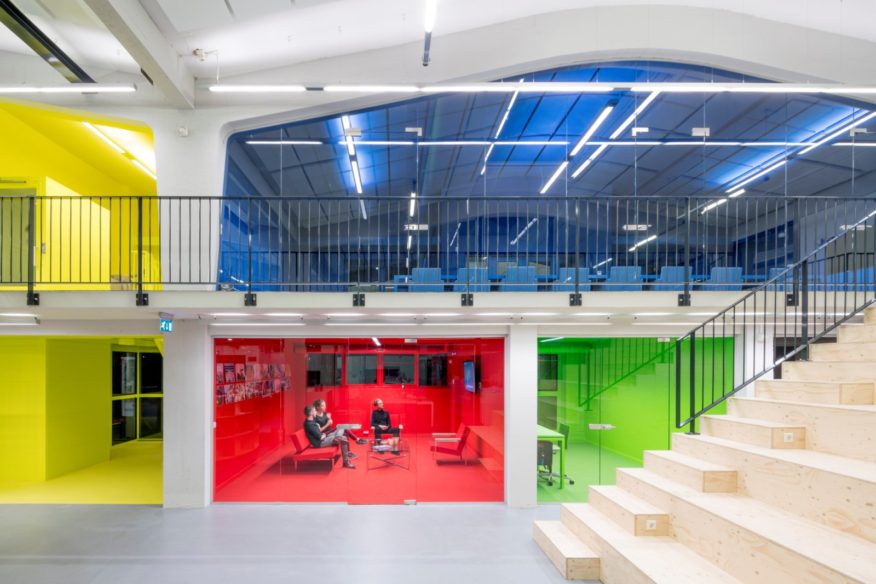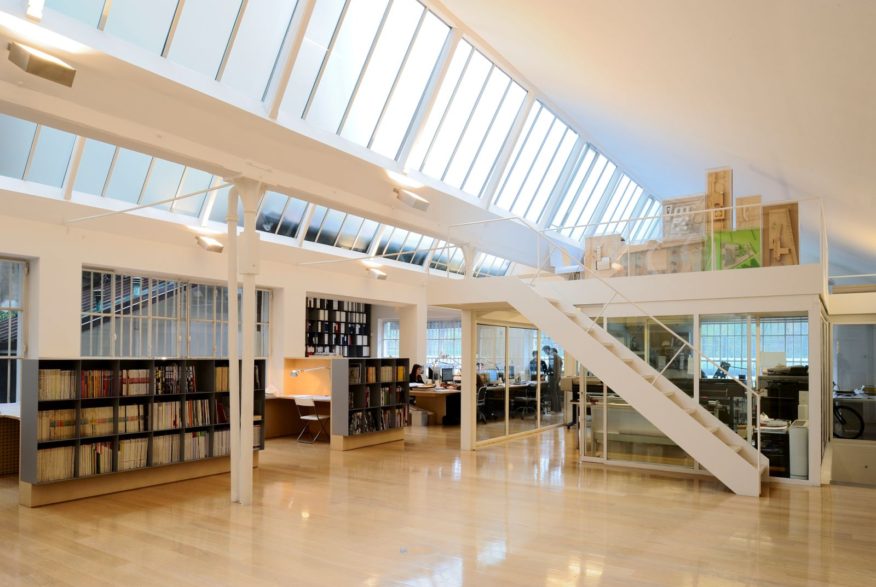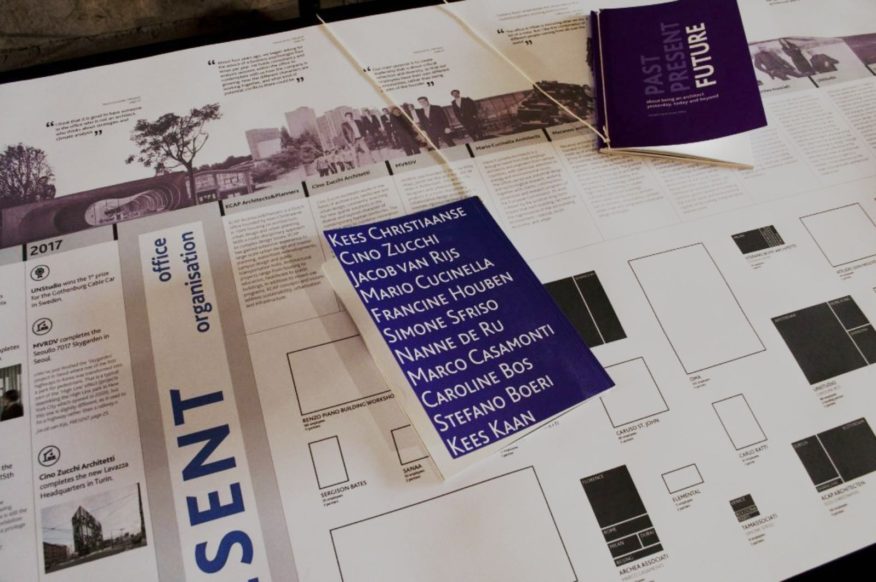
‘Past, Present, Future’ is a project involving 11 internationally renowned Italian and Dutch architects, within a research path based on video-interviews. It has been exhibited at CANactions International Architecture Festival 2018, and the exhibition is completed with a documentary-style website, and three print publications.

‘Past, Present’ Future: about being an architect yesterday, today and beyond’ is a project curated by Gianpiero Venturini, founder of Itinerant Office, with the support of the Creative Industries Fund NL and the Embassy of the Kingdom of the Netherlands in Rome. For the project ‘Past, Present, Future: about being an architect yesterday, today and beyond’, Itinerant Office interviewed 11 internationally distinguished architectural practices, with the aim of gathering personal insights about their careers, and to collect different opinions on the ever-changing profession of architecture.

The investigation was designed to open a research path based on the analysis of these successful practices in order to understand their individual approaches, enabling us to understand – through comparison – what it means to be an architect in the 21st century. Based on a series of video-interviews, the project has been divided into three parts: ‘Past, Present, Future’

Itinerant Office spoke to Francine Houben (founder of Mecanoo Architecten), Stefano Boeri (founder of Stefano Boeri Architetti), Kees Kaan (co-founder of Kaan Architecten), Jacob Van Rijs (co-founder of MVRDV), Nanne de Ru (founder of Powerhouse Company), Caroline Bos (co-founder of UNStudio), Mario Cucinella (founder of Mario Cucinella Architects), Kees Christiaanse (founder of KCAP Architects&Planners) Marco Casamonti (co-founder of Archea Associati), Simone Sfriso (co-founder of TAMassociati), and Cino Zucchi (founder of Cino Zucchi Architetti).

The first section, ‘PAST’, takes a look at their early careers by questioning which paths lead to their success, with each interviewee revealing personal memories and anecdotes from the very beginning. The ‘PRESENT’ section explores the particular characteristics of each studio, helping us to understand the ways in which they currently function, and how they have grown over time. The final section, ‘FUTURE‘, opens up a conversation of speculation, discussing about some of today’s most pressing architectural topics, and attempting to anticipate future concepts and trends.

Each interviewee closes the discourse with a piece of advice, addressing the new generation of architects and designers. ‘Past, Present, Future: about being an architect yesterday, today and beyond’ was exhibited at the CANactions International Architecture Festival 2018 hosted in the Lavra Gallery in Kyiv, Ukraine. The festival took place between 20-21st April, and presented a new sequence of extended video material, showing all 11 of the interviews along with their transcriptions, which were collected within three paper booklets.

The texts were accompanied by an archive of images, referring to the experiences of each study: the beginning of their careers, projects of the past and of the present, and a selection of relevant concepts embodying their visions of our future urban environment. An accompanying series of panels displayed info-graphics and diagrams comparing the details of each practice, whilst a graphical time-line mapped out key dates of their accomplishments.

A visual collage followed this chronology, displaying memorable quotes, along side key images of projects, characters and concepts which were mentioned throughout the interviews. A project rich in content, ‘Past, Present, Future’ has a lot of material yet to be released. The information acquired during its production can be interpereted in multiple ways, with the ability to draw connections between key trends amongst the architects’ pasts, the reasons behind the establishment and success of each of their firms, along with their unique outlooks on the future.

With similar questions being asked in each interview, common traits can be clearly distinguished. Some prevalent themes discussed with the architects include ‘mobility’, ‘intelligent technologies’, ‘urbanity’, ‘data-driven economy’ and ‘common goods’. With over 20 hours of video footage, the format of the exhibition is adjustable, and through using unreleased content and behind the scenes material, it can be represented with different focuses to achieve new, innovative outcomes. Source and photos Courtesy of Itinerant Office.

